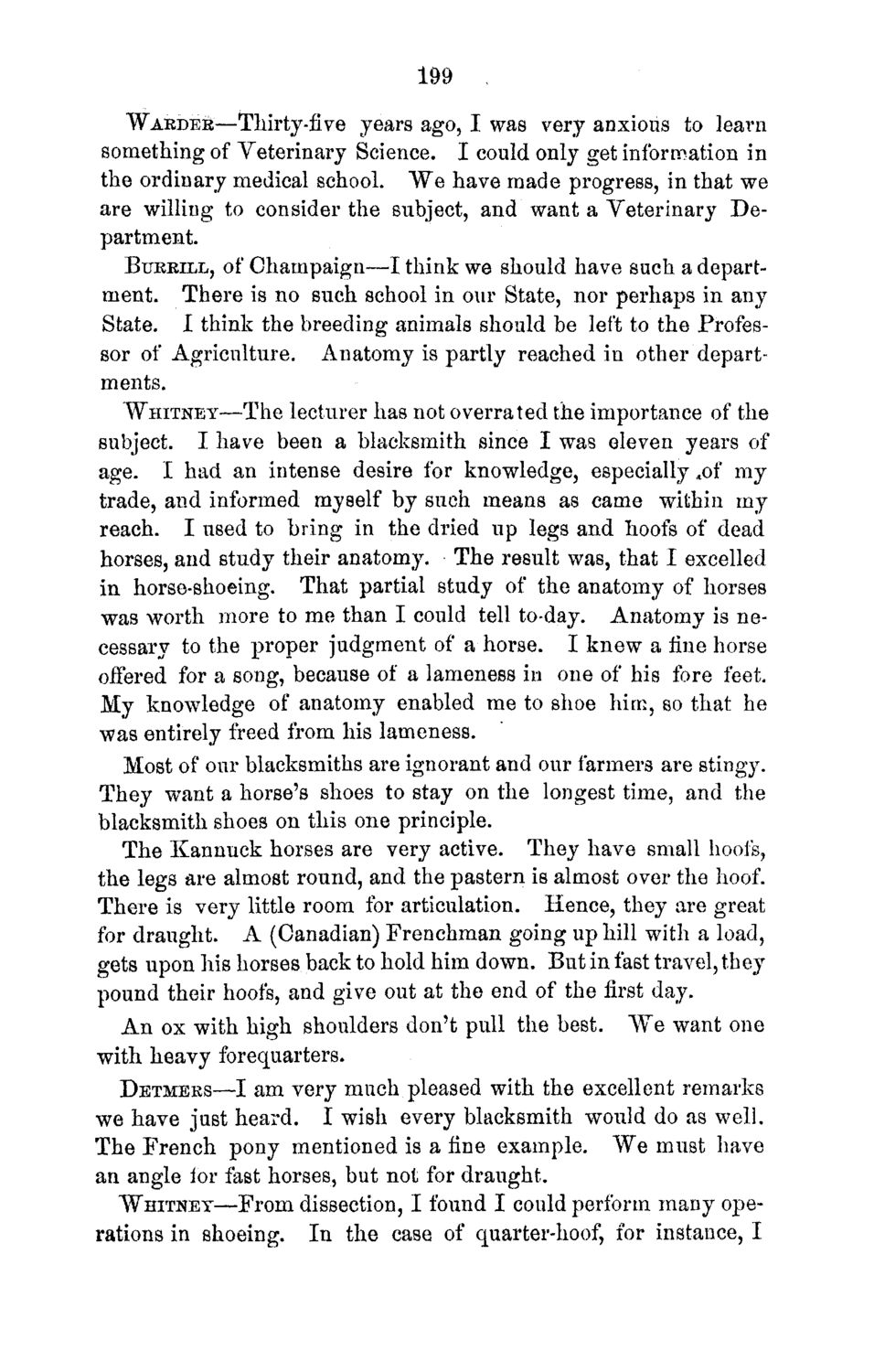| |
| |
Caption: Board of Trustees Minutes - 1870
This is a reduced-resolution page image for fast online browsing.

EXTRACTED TEXT FROM PAGE:
199 WARDER—Thirty-five years ago, I was very anxious to learn something of Veterinary Science. I could only get information in the ordinary medical school. W e have made progress, in that we are willing to consider the subject, and want a Veterinary Department. BURRILL, of Champaign—I think we should have such a department. There is no such school in our State, nor perhaps in any State. I think the breeding animals should be left to the Professor of Agriculture. Anatomy is partly reached in other departments. WHITNEY—The lecturer has not overrated the importance of the subject. I have been a blacksmith since I was eleven years of age. I had an intense desire for knowledge, especially 4of my trade, and informed myself by such means as came within my reach. I used to bring in the dried up legs and hoofs of dead horses, and study their anatomy. The result was, that I excelled in horse-shoeing. That partial study of the anatomy of horses was worth more to me than I could tell to-day. Anatomy is necessary to the proper judgment of a horse. I knew a fine horse offered for a song, because of a lameness in one of his fore feet. My knowledge of anatomy enabled me to shoe him, so that he was entirely freed from his lameness. Most of our blacksmiths are ignorant and our farmers are stingy. They want a horse's shoes to stay on the longest time, and the blacksmith shoes on this one principle. The Kannuck horses are very active. They have small hoofs, the legs are almost round, and the pastern is almost over the hoof. There is very little room for articulation. Hence, they are great for draught. A (Canadian) Frenchman going up hill with a load, gets upon his horses back to hold him down. But in fast travel, they pound their hoofs, and give out at the end of the first day. An ox with high shoulders don't pull the best. We want one with heavy forequarters. DETMERS—I am very much pleased with the excellent remarks we have just heard. I wish every blacksmith would do as well. The French pony mentioned is a fine example. We must have an angle ior fast horses, but not for draught. WHITNEY—From dissection, I found I could perform many operations in shoeing. In the case of quarter-hoof, for instance, I
| |